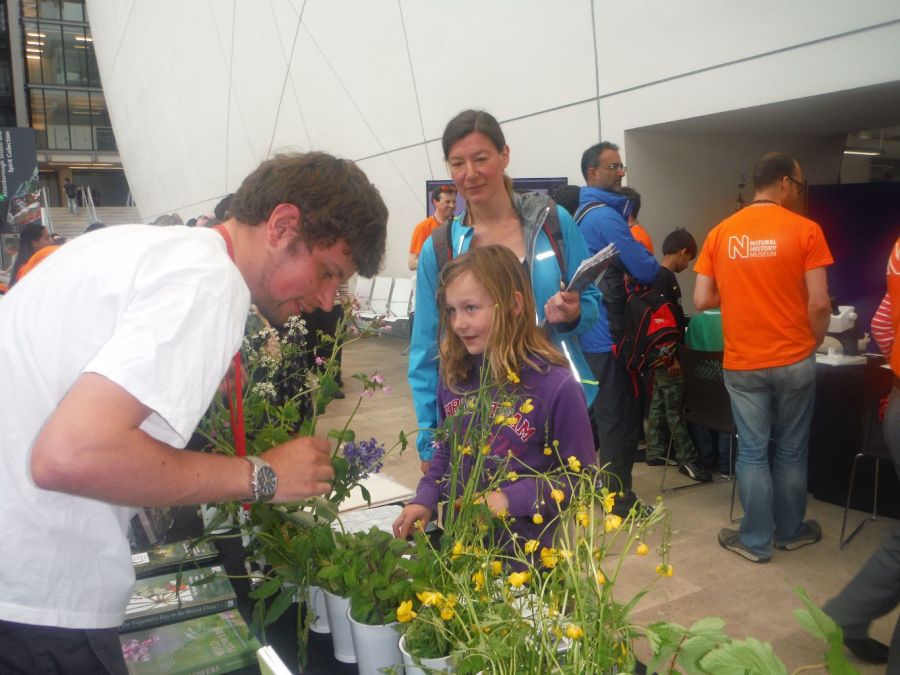The results are in for the Botanical Society of Britain & Ireland’s eighth New Year Plant Hunt, when plant-lovers across Britain and Ireland head out to see what is flowering in their local patch.
More people took part this year than ever before, hunting for up to three hours over the New Year period, and they recorded more species in bloom than ever before. Here’s what they found:
- A total of 14,193 records of plants in bloom across Britain and Ireland.
- 627 different species were recorded, compared to 492 last year and 611 in 2016.
- 712 lists were submitted, compared to 612 in 2018 and 460 in 2017.
- Almost 1,500 people participated, either individually, as part of family groups or as members of botanical recording groups.
- Plant hunters joined in from Orkney to Guernsey, from Donegal to Norfolk, from west Cork to the Kent coast.
- Plant Hunts were held in the wider countryside and in urban areas including London, Edinburgh, Leicester, Cambridge, Cardiff, Dublin and Bristol.
As expected, the milder south and west of Britain and Ireland had the highest numbers of species in flower – 120 in Swanage – a similar number to 2018 but nowhere near the 2016 top total of 162 species recorded in Berkshire.
“We can’t yet prove that more species are flowering in mid-winter nowadays, rather than in the past, but NYPH has shown that in milder winters, more plants flower because of warmer temperatures and fewer frosts”
BSBI’s Head of Science Dr Kevin Walker has analysed this year’s results and compared them with those from previous years. He said: “Botanists were out in force again this New Year and found a record-breaking number of wild plants in flower. This was undoubtedly due to the very mild weather we had in November and December, although numbers were slightly lower than 2016 when botanists recorded an average of 21 species in flower. This year’s average was just under 20.”
The main findings were:
- 58% of the records were of species which normally flower after midsummer and had managed to carry on flowering. These include ‘Autumn Stragglers’ such as Yarrow, Ragwort and Hogweed.
- Only 24% were ‘Springtime Specialists’ like Primrose and Lesser Celandine, so there is no indication of an early spring. This proportion is similar to previous years.
- 19% of the records submitted were of species we might reasonably expect to flower at New Year, or species which we cannot easily be categorised as either ‘early’ or ‘late’. These include typical ‘All Year Rounders’ such as Shepherd’s-purse as well as ‘Winter Specialists’ such as Winter Heliotrope.
- The top five species were Daisy, Groundsel, Dandelion, Annual Meadow-grass, and Gorse – almost identical to previous years and all (native) plants we would expect to be flowering at this time of year.
- 36% of species recorded were non-natives. This includes plants from warmer climates that have escaped from gardens or cultivation, become naturalised in the wild and were able to extend their flowering into the winter months.
As in previous years, urban areas tended to have more non-native species in flower than rural areas, as there are more sheltered and disturbed places with warm microclimates where alien plants can thrive.
Kevin said “We can’t yet prove that more species are flowering in mid-winter nowadays, rather than in the past, but NYPH has shown that in milder winters, more plants flower because of warmer temperatures and fewer frosts. We don’t yet know what the implications of this are for plants and associated insects – but what we do know is that weather patterns are changing and that plants are responding.”
To download Kevin’s analysis in full, and for New Year Plant Hunt 2019 blogposts, images and social media, please visit: bsbi.org/new-year-plant-hunt.
Image courtesy of BSBI








